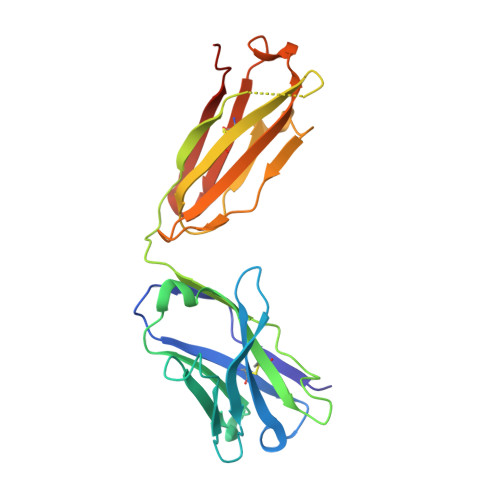Antibody modeling assessment II. Structures and models.
Teplyakov, A., Luo, J., Obmolova, G., Malia, T.J., Sweet, R., Stanfield, R.L., Kodangattil, S., Almagro, J.C., Gilliland, G.L.(2014) Proteins 82: 1563-1582
- PubMed: 24633955
- DOI: https://doi.org/10.1002/prot.24554
- Primary Citation of Related Structures:
4KMT, 4KQ4, 4M6M, 4M6O, 4M7K, 4MAU - PubMed Abstract:
To assess the state-of-the-art in antibody structure modeling, a blinded study was conducted. Eleven unpublished Fab crystal structures were used as a benchmark to compare Fv models generated by seven structure prediction methodologies. In the first round, each participant submitted three non-ranked complete Fv models for each target. In the second round, CDR-H3 modeling was performed in the context of the correct environment provided by the crystal structures with CDR-H3 removed. In this report we describe the reference structures and present our assessment of the models. Some of the essential sources of errors in the predictions were traced to the selection of the structure template, both in terms of the CDR canonical structures and VL/VH packing. On top of this, the errors present in the Protein Data Bank structures were sometimes propagated in the current models, which emphasized the need for the curated structural database devoid of errors. Modeling non-canonical structures, including CDR-H3, remains the biggest challenge for antibody structure prediction.
- Janssen Research & Development, LLC, 1400 McKean Road, Spring House, Pennsylvania, 19477.
Organizational Affiliation:




















